Olive Young - Gwangju Seonun District Branch [Tax Refund Shop] (올리브영 광주선운지구점)
15.6Km 0 2024-06-26
418, Eodeung-daero, Gwangsan-gu, Gwangju
-
Wolbongseowon Confucian Academy (월봉서원)
15.8Km 4310 2021-07-06
133, Gwanggok-gil, Gwangsan-gu, Gwangju
+82-62-960-8253
Wolbongseowon Confucian Academy, built in 1578, was established by Kim Gyehwi and other confucian scholars to honor Ki Daeseung's study and virtue through Mangcheonsa Shrine. The location of the academy was moved to its current site in 1646, and the name Wolbong was given by King Hyojong in 1654. In 1671, Bak Sang and Bak Sun's shrines were moved from Deoksansa Shrine by the suggestion of Song Siyeol. Also, Kim Jangsaeng and Kim Jip's shrines were additionally placed in 1673. Unfortunately, the confucian academy was abolished due to the abolition policy of Daewongun in 1868. Later, Bingwoldang Hall was built by Jeollanam-do's Confucian scholars in 1938, followed by Gojiksa Shrine in 1972, Jangpangak Pavilion and Oesammun Gate in 1978, Sau in 1980 and Naesammun Gate in 1981. Bingwoldang is designated as Gwangju Monument No. 9 and woodblocks of Gobongjip are preserved in Jangpangak Pavilion.
Dolmeori Beach (돌머리해변)
15.8Km 25016 2021-10-26
614, Jupo-ro, Hampyeong-gun, Jeollanam-do
+82-61-322-0011
Dolmeori Beach is located at the westernmost point of Hampyeong-eup on a rocky tip, giving the beach its name Dolmeori, meaing a rock head.
Near the beach, there is a dense forest of sweet smelling pine trees and fresh water which is shallow enough for swimming. Although the difference in the landscape between high and low tide is considerable, efforts have been made to make up for the shortcomings. A swimming pool has been installed over an area of 8,910 square meters, for swimming even during low tide. Also, various facilities have been installed for the visitors' convenience. A long, wooden bridge was installed for the viewing of the mud flats and sea creatures during low tide. On the mud flats there is a flurry of sea life, and the look-out sheds near the beach sell fresh summer fruits.
National Center for Forest Education, Naju (국립나주숲체원)
15.9Km 0 2024-02-19
116 Geumseongsan-gil, Naju-si, Jeollanam-do
National Center for Forest Education, Naju is a national recreational facility located on Geumseongsan Mountain. It operates customized forest education and cultural programs based on the wild tea plantation of Geumseongsan Mountain and the culture of Naju. Utilizing the facilities of the forest center and the surrounding nature, it offers various experiential programs such as forest walking, stretching, meditation, and natural dyeing experiences of Naju's traditional culture.
Korean Folk Art Festival (한국민속예술제)
16.7Km 9123 2023-09-07
673 Danju-ri, Yeonggwang-eup, Yeonggwang-gun, Jeollanam-do
+82-2-580-3272
The Korean Folk Art Festival aims to encourage visitors to discover and preserve Korea’s traditional folk art while fostering the public’s awareness of traditional culture. The special characteristic of this festival is that a different city hosts the event every year to showcase talents from cities around the country. The festival features many intangible cultural heritages of Korea.
3917Majung [Korea Quality] / 3917마중 [한국관광 품질인증]
17.5Km 31 2024-06-26
42-16 , Hyanggyo-gil, Naju-si, Jeollanam-do
+82-61-331-3917
3917 Majung is a Japanese- and Western-style hanok commonly seen in the late Korean Empire period, in Naju, Jeollanam-do, which combines a cafe, cultural space and hanok stay. The 3.2 acre site contains four buildings, with a mixture of ondol rooms, tatami rooms, daecheong floors and numaru lofts. Some buildings have bathrooms installed, some share outdoor bathrooms. All four buildings are let as private houses.
Himart - Naju Branch [Tax Refund Shop] (하이마트 나주점)
17.6Km 3 2024-04-18
11, Daeho-gil, Naju-si, Jeollanam-do
-
Hyanggyo-gil 20 Café (향교길20카페)
17.7Km 0 2024-02-19
22-1 Hyanggyo-gil, Naju-si, Jeollanam-do
Hyanggyo-gil 20 Café is a hanok café located along the Hyanggyo-gil street in Naju. Visitors can enjoy beverages in a space that preserves the beauty of tradition through the renovation of hanok architecture. One of its signature items is the Naju bae ssalppang (Naju pear-shaped rice bread), a gluten-free dessert made by filling a rice dough, incorporating Naju pears, with cream. It pairs wonderfully with traditional Korean beverages such as hongsam ssanghwacha (red ginseng medicinal herb tea) and daechucha (jujube tea).
Olive Young - Gwangju Songjeong Station Branch [Tax Refund Shop] (올리브영 광주송정역)
17.7Km 0 2024-04-22
1F, 207, Sangmu-daero, Gwangsan-gu, Gwangju
-
1913 Songjeong Station Market (1913송정역시장)
17.8Km 5659 2023-11-28
13 Songjeong-ro 8beon-gil, Gwangsan-gu, Gwangju
+82-62-942-1914
Songjeong Station Market was opened in 1913 in connection with the opening of Gwangju-Songjeong Station. For many years, the market was the go-to-place for necessary items and produce, but with the increase of large supermarts in the 1990s, people began to visit traditional markets less and less. In order to increase the liveliness of Songjeong Station Market and showcase the difference between modern marts and a traditional market, the entire space was redesigned around the theme of time.
The newly redesigned 1913 Songjeong Station Market, located just across the street from Gwangju-Songjeong KTX Station, has a bright appearance with modern-styled architecture and signboards detailing the history of the various shops. Visitors can enjoy all the classic market foods here, such as hotteok (hot griddle cakes), gyeran bap (rice with egg), and eomuk (fish cake).

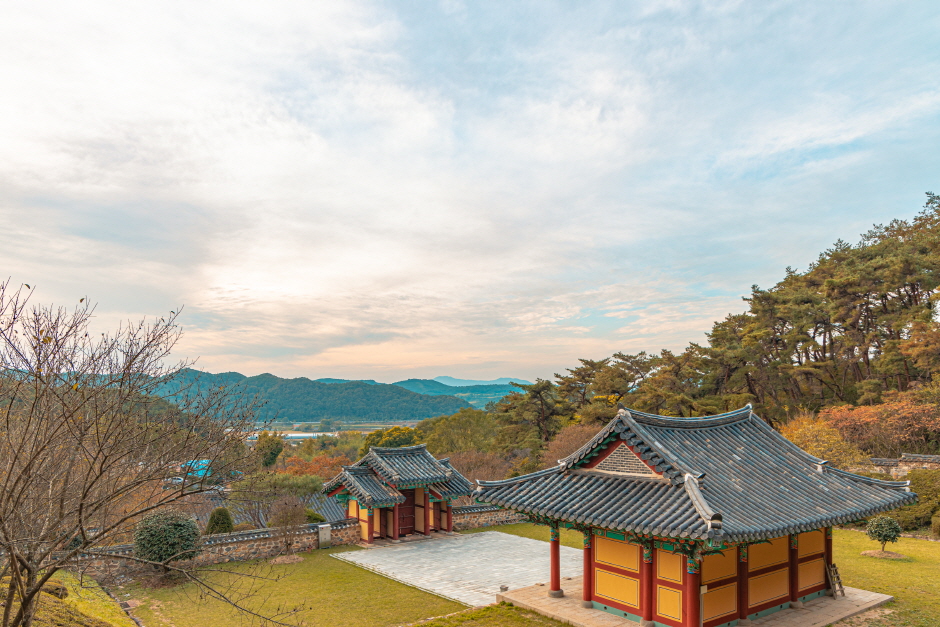
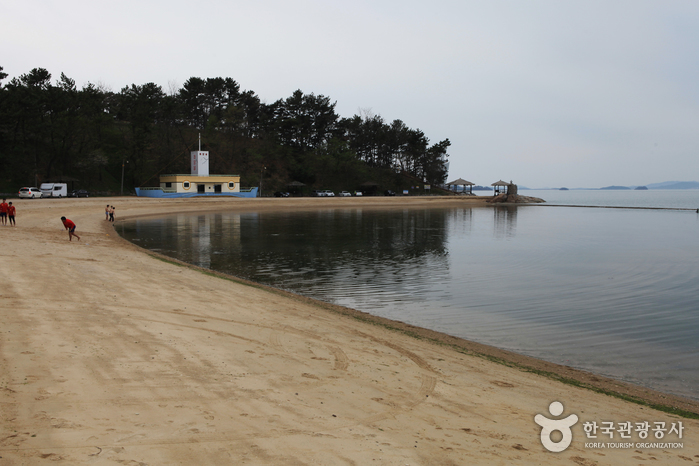
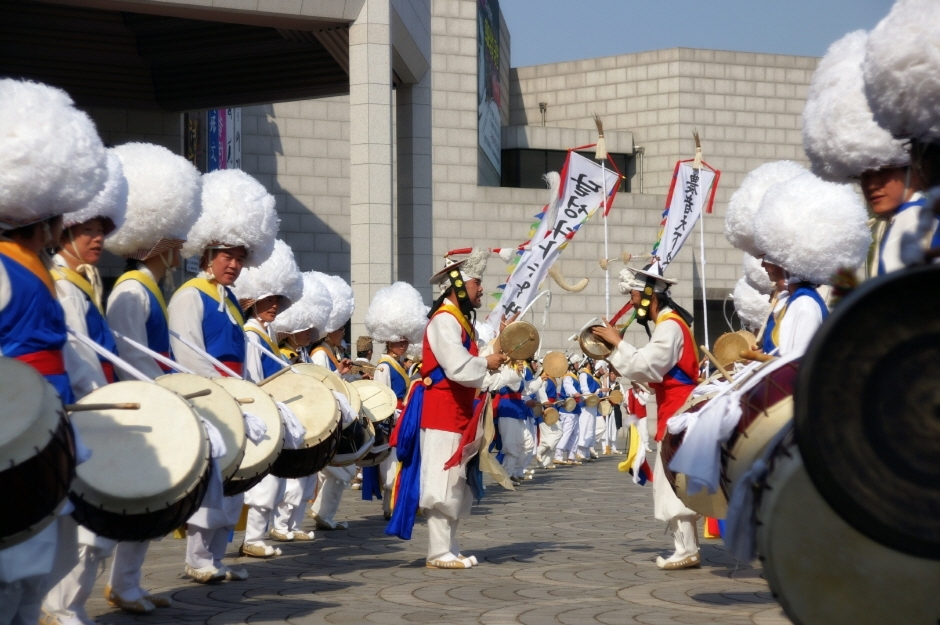
![3917Majung [Korea Quality] / 3917마중 [한국관광 품질인증]](http://tong.visitkorea.or.kr/cms/resource/24/2706124_image2_1.jpg)
![Himart - Naju Branch [Tax Refund Shop] (하이마트 나주점)](http://tong.visitkorea.or.kr/cms/resource/82/2886482_image2_1.jpg)
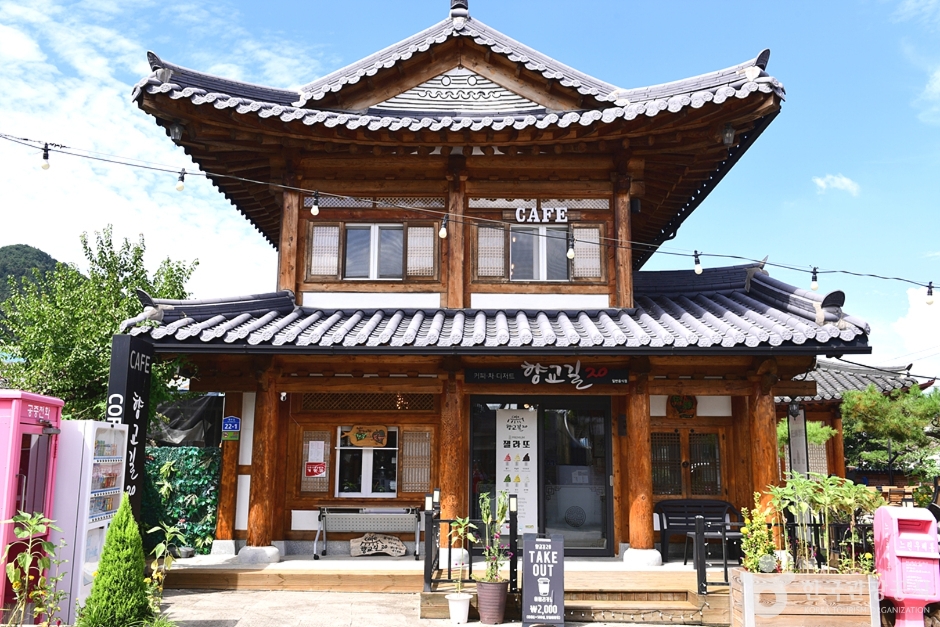
![Olive Young - Gwangju Songjeong Station Branch [Tax Refund Shop] (올리브영 광주송정역)](http://tong.visitkorea.or.kr/cms/resource/88/2886988_image2_1.jpg)
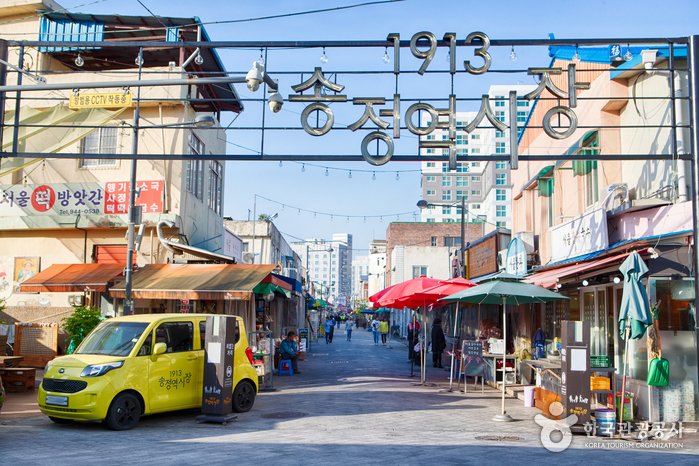
 English
English
 한국어
한국어 日本語
日本語 中文(简体)
中文(简体) Deutsch
Deutsch Français
Français Español
Español Русский
Русский